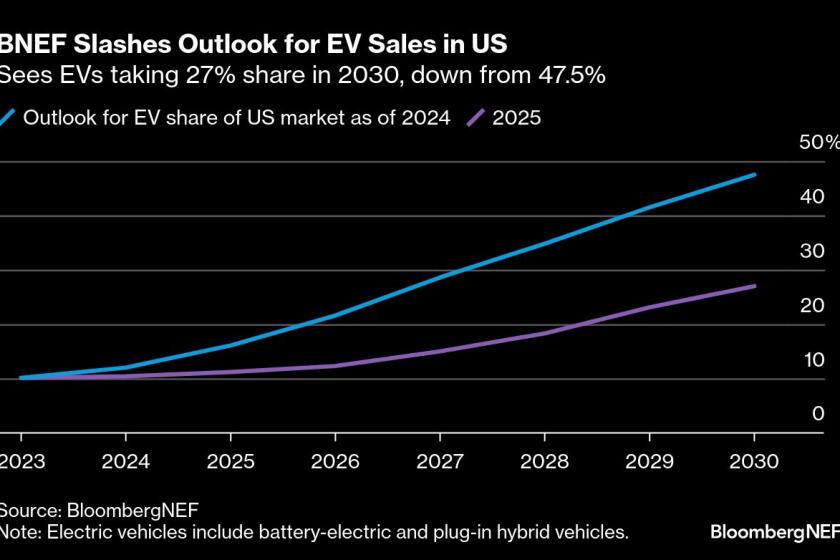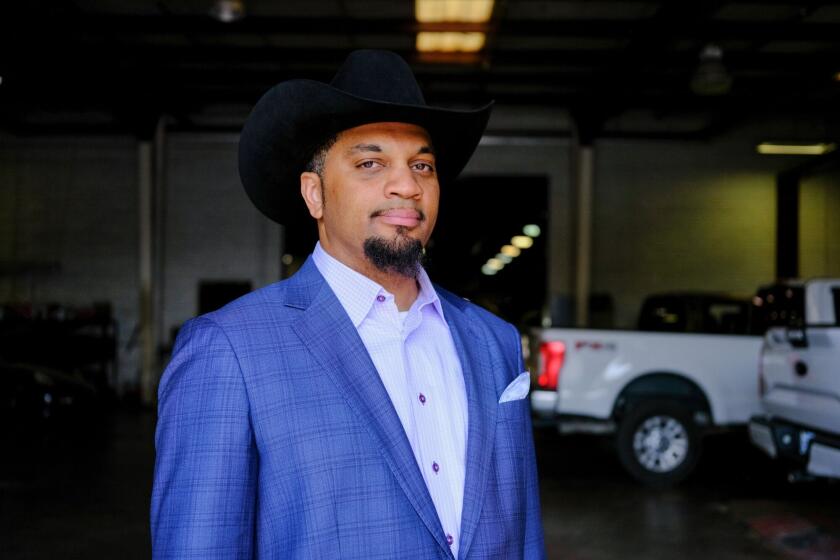Honda’s Accord Drives Off With Best-Selling Status : Automobiles: Analysts call the event a milestone in Japan’s dominance over American auto makers. Ford’s Escort was knocked out of the lead.
- Share via
DETROIT — For the first time ever, a Japanese car--the Honda Accord--has become the best-selling model in America.
Sales figures for 1989, released Thursday by the auto industry, provide yet another sign of Japan’s increasing dominance over Detroit’s troubled auto makers.
Yet the Accord’s stunning rise also underlines the growing importance within the auto industry of the rapidly expanding U.S. manufacturing operations of Japanese companies such as Honda. More than half of the Accords sold by Honda in the United States in 1989 were built at Honda’s manufacturing complex in Ohio.
“This is a real milestone,” noted Ted Sullivan, an automotive analyst with WEFA/Ward’s Automotive Research, a Bala-Cynwyd, Pa., research firm. “It reflects the changing competitive picture within the industry and the strength of the transplants”--the U.S. factories run by Japanese auto makers.
With 1989 sales of 362,707 units, the Accord took over the top spot that was held by the Ford Escort in 1988. The Ford Taurus--a direct competitor of the Honda Accord in the family sedan market--came in second in 1989, followed by the Escort.
Although Accord sales did not rise very much over 1988 levels, it still came in first because of plunging sales for competing cars from the Big Three. Both the Escort and Taurus suffered big sales declines last year: Escort sales fell more than 13%, while the Taurus was down 6.5%.
“We’re not too happy about it, but at least we have No. 2 and 3,” said Ford spokesman Jon Roberts.
The Accord’s sales triumph in 1989 capped a decade in which it became the car of choice for a solid core of affluent young professionals, who bought it first for its bulletproof reputation for quality and later for the fashion statement the car helped convey. Today, a demographic profile of the average Accord buyer looks almost like a Webster’s definition of yuppie--a 38-year-old manager or professional with a college degree making roughly $50,000 a year.
“The Accord has just kind of followed the baby boomers as they have grown up,” Honda spokesman Kurt Antonius said.
But the car’s appeal has begun to widen beyond the yuppie market, and today the Accord is starting to fill the role of the bread-and-butter family car once considered the province of Chevrolet. In fact, the redesigned 1990 Accord is six inches longer than the previous compact model and is attracting more family buyers than ever before.
“You can’t sell 360,000 a year as a specialty car,” said Tom Elliott, executive vice president of Honda’s U.S. sales and marketing arm. “It has gained a much broader appeal, and now with our new Accord, we are getting people who wouldn’t have considered it before.”
Honda officials say they could never have gained the top ranking if the company hadn’t moved aggressively in the early 1980s to build cars in this country. The first Japanese car to be built in America, in fact, was a Honda Accord produced at Honda’s plant in Marysville, Ohio, on Nov. 1, 1982.
Seven years later, Honda has the capacity to build 510,000 cars a year in the United States and another 80,000 in Canada--far more than any other Japanese company. Since direct imports from Japan have been effectively frozen by quotas imposed by the Japanese government, Honda’s additional U.S. production has allowed it to become the best-selling Japanese nameplate in America. Honda’s total U.S. passenger car sales of 783,102 easily beat Toyota’s total of 723,659 in 1989.
Honda, which has recently slipped to fourth place in car sales in the Japanese home market, is now selling far more cars in the United States than it does in Japan.
As a result, the company is placing a greater emphasis than ever before on “Americanizing” its cars; it just opened a second U.S. assembly plant in East Liberty, Ohio. Meanwhile, 70% of the parts, including engines and transmissions, installed on Honda’s American-assembled cars now come from the United States.
“Although it has a Japanese nameplate, we consider the Accord to be much more of a domestic than an import,” Honda’s Elliott said.
Industry analysts say most consumers cannot tell any difference in quality between a Honda built in Ohio and one built in Japan. Honda’s early success at building high-quality cars in America persuaded the other major Japanese auto makers that they could do the same. There are now eight Japanese-run “transplant” assembly plants in the United States, which collectively will soon be capable of turning out 2 million cars and trucks per year.
Now, many analysts believe that those transplants, with Honda’s operations in the lead, will come to dominate the domestic auto industry in the future.
“The next milestone will come when Honda’s U.S. auto production surpasses that of Chrysler, and Honda becomes No. 3 in the Big Three,” Sullivan said. “I think that will come in the next few years. We are going to have to change our definitions of domestic and foreign cars.”






